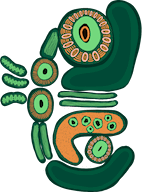
Tooth staining foods to avoid for whiter teeth
We’d all like to have a white and bright smile, though for lots of reasons achieving this is not always possible. Over time and exposure to certain foods and drinks can lead to tooth staining and yellow or discoloured teeth. For most of us, this is unavoidable. Teeth can also appear discoloured because of ‘intrinsic’ factors – due to medications taken when the teeth are forming, or trauma to the tooth.
Teeth stain because they’re made up of porous material. Like a teacup becomes discoloured with use, our teeth are at risk of staining when they’re exposed to dark, red and tan coloured substances called chromogens. The most common liquids which stain white tooth enamel are coffee and tea. Soft drink can also cause tooth staining, particularly those which are caramel or dark coloured.
How can I avoid eating and drinking tooth staining foods?
It’s impossible to monitor everything that we consume. One of the most effective ways to limit exposure to staining is to rinse with plain water straight after eating and drinking. This helps to remove staining compounds from the teeth. Another option is to brush teeth after eating and drinking, though this is not always possible. Chewing a sugar-free gum can also help to boost saliva flow which can help to reduce the risk of staining. Although, it’s important to limit your frequency of chewing gum as this can cause digestive issues.
Tooth staining from decayed teeth and enamel
Teeth can also become discoloured with age and general wear and tear. Tooth brushing over time can also cause the enamel to thin, allowing more of the (naturally yellow) dentine to show through. Decayed teeth commonly appear dark and discoloured, as can teeth which have been damaged and have a reduced blood supply. Smoking and some medications can also cause teeth to discolour.
What foods and drinks are more likely to stain my teeth?
Foods and drinks which are acidic, like red wine, can cause the pores of the teeth to roughen and open up more. This means that as the enamel becomes more abrasive, its surface area increases, making staining foods and drinks more likely to etch into the tooth surface.
Common staining foods and drinks are:
- Tea and coffee which contain tannins – naturally occurring chemical compounds.
- Red and white wine which also contains tannins, though red wine is more likely to stain teeth.
- Berries and fruit juice, especially those made from dark pigmented fruits like grapes and blueberries.
- Tomato based sauces – because of the colour as well as the acidic content.
- Sweets and lollies, including chocolate and those with coloured dyes.
- Soy sauce and balsamic vinegar.
How can I prevent my teeth from becoming stained?
Like many other protective health habits, prevention can make a big difference.
- Visiting your dentist for regular oral health checks and expert cleaning will help to detect early problems. Book an appointment today to discuss how to care for your teeth and gums.
- Try to avoid eating staining foods, especially when you don’t have the option to rinse or brush your teeth soon after eating.
- Get into the habit of rinsing your mouth with plain water after meals.
- Drink dark juice and soft drinks through a straw so your teeth aren’t as exposed to the liquid.
What are my options when it comes to tooth whitening?
Tooth whitening involves treating the teeth with gel which contains a special concentration of hydrogen peroxide or carbamide peroxide. This helps to remove stains and restore them to a whiter shade.
In consultation with your dentist, you can choose the right shade of white for you. Tooth whitening can be done in the dental chair or at home, using trays which hold a bleach solution against the teeth. Book an appointment today to discuss your teeth whitening options with your dentist.
https://www.healthline.com/health/foods-that-stain-teeth
https://www.teeth.org.au/teeth-whitening
